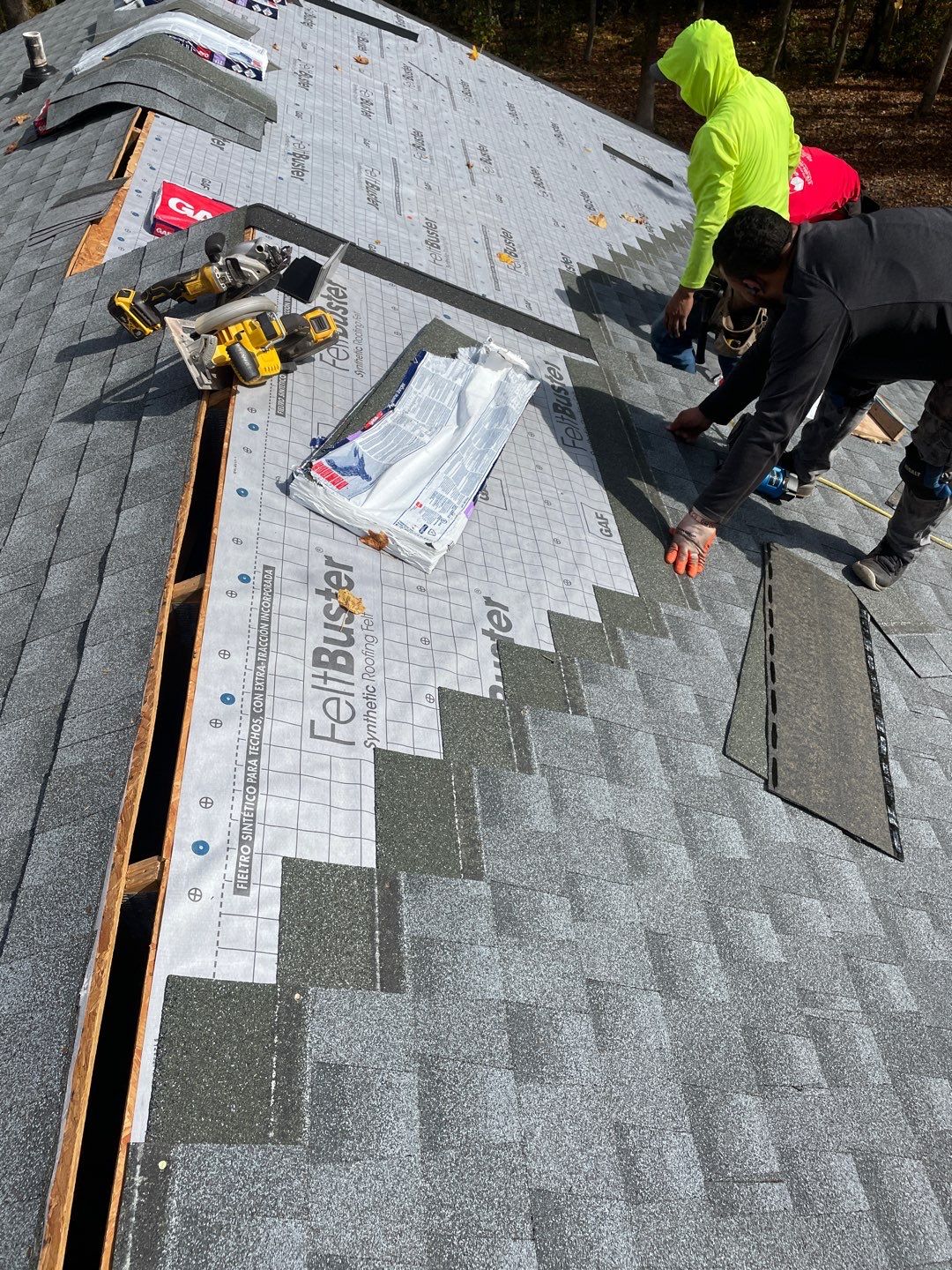Finest Practices for Ensuring Proper Roof Covering Air Flow
Making certain proper roofing air flow is critical for the longevity and effectiveness of a roof covering system. A balanced consumption and exhaust vent ratio, generally 1:300, plays an essential function, with intake vents ideally positioned at the lower edge of the roof covering for awesome air entrance and exhaust vents at the peak for warm air departure. Routine inspections to identify obstructions and maintain clear air movement are vital. Moreover, keeping insulation away from vents is crucial to stop air movement restriction. Comprehending these foundational aspects establishes the phase for more detailed insights right into installation and maintenance methods that can substantially improve your roof's performance.
Understand Air Flow Fundamentals
Correctly understanding air flow essentials is crucial for making certain the longevity and performance of roof. Effective ventilation mitigates moisture accumulation and temperature level extremes in the attic, both of which can result in substantial structural damages in time. A well-ventilated roof aids in stopping common concerns such as mold development, timber rot, and ice dams, which can endanger the stability of the roofing materials and the underlying frameworks.
The main objective of air flow is to facilitate the activity of air, permitting a consistent exchange in between the interior and exterior environments. This balance is accomplished through a combination of intake and exhaust vents that work together to maintain ideal air movement. Consumption vents, usually located along the eaves or soffits, permit fresh air to get in the attic room, while exhaust vents, frequently located at or near the roof covering ridge, enable warm, humid air to escape.
Trick factors affecting the performance of roof covering ventilation consist of correct positioning, appropriate sizing, and guaranteeing that both intake and exhaust vents are unblocked. Normal inspection and maintenance are critical to recognize prospective clogs, damages, or inadequacies in the air flow system, thereby safeguarding the roof covering's performance and toughness.
Sorts Of Roofing System Vents
Roof covering vents play a critical role in maintaining efficient attic room air flow and, by extension, the general health of the roof. Various sorts of roof vents are offered, each with distinct advantages tailored to details roof covering needs. Ridge vents, for example, are set up along the roofing system's top, permitting cozy, humid air to run away from the attic room. They supply continual air flow and mix effortlessly with the roofline, making them both reliable and aesthetically pleasing.

Soffit vents are set up under the eaves and operate in tandem with roof covering vents to make sure a balanced intake and exhaust system. By enabling cooler air to go into from below, soffit vents facilitate the expulsion of warm air through top vents. Gable vents, situated on the outside wall surfaces of the attic room, offer an additional reliable option, specifically in homes with gable roofing systems.
Analyze Your Present Air Flow

Next, consider the age and problem of your roofing materials and ventilation components. Older systems might not abide by current building codes or i thought about this may have degraded in time, lowering their efficiency. Conduct a comprehensive assessment to identify any kind of indicators of deterioration, such as corrosion, damages, or voids that might endanger the system's efficiency.
Additionally, gauge the attic room temperature level and moisture levels. Heats and humidity can show insufficient air flow - roofing companies gainesville florida. Use a hygrometer and thermostat to acquire exact analyses, contrasting them with exterior conditions. Consistent inconsistencies suggest possible problems that require addressing.
Setup Best Practices
Effective setup of roof covering ventilation systems is critical for ensuring optimum performance and long life. Appropriate setup begins with comprehending the details ventilation requirements of the building and the roof covering it covers. This entails computing the correct proportion of consumption to exhaust vents, generally adhering to the 1:300 guideline, which stipulates one square foot of air flow for each 300 square feet of attic flooring area.

Intake vents ought to be installed at the roof's lower side, frequently in the soffits, to enable cool air to go into. Exhaust vents, on the other hand, ought to be mounted near or at the roof covering's height to facilitate the exit of warm, damp air.
Seal all air vent links diligently to protect against air leaks and prospective water seepage. Usage high-quality materials and comply with maker standards to guarantee durability and efficiency. Additionally, incorporating ridge vents with baffles can substantially boost air flow efficiency by preventing wind-driven rainfall and snow from entering the attic.
Inevitably, specific setup of roofing ventilation systems reduces possible issues such as mold and mildew growth, ice dams, and structural damage, ensuring the roofing system's honesty and the structure's total health and wellness.
Routine Maintenance Tips
Consistency in upkeep techniques is fundamental to making sure the lasting effectiveness of roofing ventilation systems. Throughout these assessments, make sure that vents are free of particles, nests, and other obstructions that could hinder air flow.
Make use of a soft brush or a vacuum to remove dirt and debris from intake and exhaust vents. Be mindful not to damage the air vent screens or louvers during the process.
Correct insulation is equally vital. Make sure that attic insulation does not block the vents, as this can significantly restrict airflow. Reposition or replace it to preserve a reliable barrier. if any type of insulation has actually changed or resolved.
Last but not least, replace any type of harmed or missing useful content parts promptly. Busted vents, split shingles, or worn-out blinking can all contribute to insufficient ventilation and ought to be attended to without delay. Regular maintenance makes sure that the roof ventilation system operates ideally, thereby prolonging the life-span of the roof itself.
Verdict
Making certain appropriate roofing ventilation is extremely important for preserving the effectiveness and longevity of a roof system. Adherence to the 1:300 intake and exhaust air vent ratio, combined with the calculated positioning of vents, is essential.
A well balanced intake and exhaust vent proportion, commonly Look At This 1:300, plays a crucial role, with consumption vents preferably placed at the lower side of the roofing for amazing air access and exhaust vents at the height for cozy air exit. Consumption vents, normally located along the soffits or eaves, allow fresh air to enter the attic area, while exhaust vents, often situated at or near the roof ridge, enable warm, damp air to escape.
Soffit vents are mounted under the eaves and job in tandem with roofing vents to make sure a balanced intake and exhaust system. By permitting cooler air to go into from below, soffit vents facilitate the expulsion of hot air via upper vents. Adherence to the 1:300 consumption and exhaust vent proportion, paired with the strategic placement of vents, is necessary.
Comments on “Contrasting Costs Among Roofing Companies in Gainesville Florida”